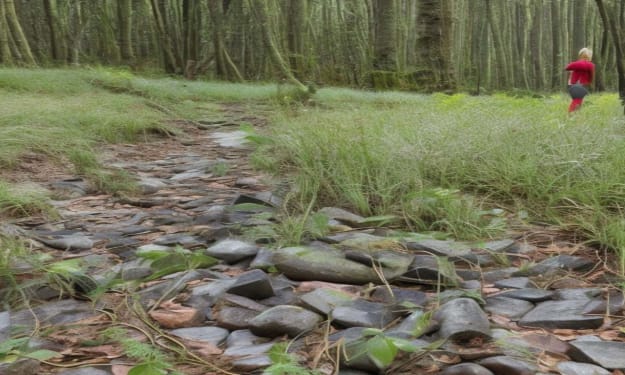Artificial Plants - Fact Or Fiction? A Historian’s Perspective
If you’re like most people, you probably have a few artificial plants around your home. But have you ever wondered about their history?

If you’re like most people, you probably have a few artificial plants around your home. But have you ever wondered about their history?
In this blog post, historian Sara Barnes takes a look at artificial plants from a historical perspective. She explores where they came from, how they’ve evolved over time, and whether or not they’re here to stay.
So if you’re curious about artificial plants, read on!
Introduction
Artificial plants have been around for centuries, with the earliest known examples dating back to ancient Egypt. In more recent history, they became popular in Europe during the Victorian era, when Queen Victoria herself was said to be a fan. Today, they are commonly used in homes and offices as a way of adding a touch of greenery without the hassle of caring for real plants.
So, what exactly are artificial plants? Put simply, they are imitations of real plants, made from materials such as plastic, silk, or even paper. They come in all shapes and sizes, and can be used to decorate both indoor and outdoor spaces. While they may not be able to replace the real thing, artificial plants can be a great way to add a bit of color and life to your home or office.
The History Of Artificial Plants
Artificial plants have been around for centuries, with the earliest known examples dating back to ancient Egypt. In those days, artificial plants were made from a variety of materials including papyrus, reeds, and even wood.
It is believed that the ancient Egyptians used artificial plants as part of their religious ceremonies and as decorations in their homes. In fact, many of the artificial plants that have been found in Egyptian tombs are still in excellent condition today.
The use of artificial plants continued during the Roman Empire and the Middle Ages. In the Roman Empire, artificial plants were often used in public parks and gardens. During the Middle Ages, artificial plants were used to decorate churches and homes.
The first artificial plants made from plastic were created in the early 1900s. These early plastic plants were often used as novelties or as decorations in store windows.
Today, artificial plants are made from a variety of materials including plastic, silk, and even metal. They are used in a wide variety of settings including homes, offices, and public spaces.
The Benefits Of Artificial Plants
Artificial plants have a number of benefits over real plants. For one, they are much easier to care for. You don’t have to worry about watering them or giving them sunlight - they can thrive in any type of environment.
Another benefit of artificial plants is that they are much more durable than real plants. They can withstand a lot of wear and tear, and they won’t wilt or die if you forget to water them for a few days.
Lastly, artificial plants can be a great way to add some life to your home without having to deal with the mess and hassle of real plants. They can brighten up any room, and they’re a lot less work than taking care of a real plant.
The Disadvantages Of Artificial Plants
Artificial plants have been around for centuries, but they have only become widely popular in recent years. There are many reasons why people choose artificial plants over real plants, but there are also some disadvantages to using them.
One of the biggest disadvantages of artificial plants is that they can be very expensive. Real plants are much cheaper to buy and maintain, and they can last for years with proper care. Artificial plants also require special care and cleaning, which can add to the cost.
Another disadvantage of artificial plants is that they can look fake and unnatural. Real plants are always changing and growing, which gives them a natural look. Artificial plants often look the same day after day, which can make them seem fake.
Finally, artificial plants can be bad for the environment. They are made from materials that are not biodegradable, so they will stay in landfills for years. Real plants, on the other hand, are made from natural materials that will eventually break down and return to the earth.
Overall, there are some disadvantages to using artificial plants. However, many people still choose to use them because they are easy to care for and they can last for a long time.
The Future Of Artificial Plants
The future of artificial plants is looking very promising. With advances in technology, artificial plants are becoming more and more realistic and lifelike. In fact, some artificial plants are now so realistic that it is difficult to tell them apart from real plants.
One of the main reasons why artificial plants are becoming so popular is because they are much easier to care for than real plants. Artificial plants do not need to be watered or fertilized, and they can be placed in any location, even in areas where there is no natural light.
Another reason why artificial plants are becoming more popular is because they are now available in a wide range of styles and colors. This means that there is an artificial plant to suit every taste and decorating style.
So what does the future hold for artificial plants? It is likely that they will continue to become more realistic and lifelike, and more and more people will choose to use them in their homes and offices.
Conclusion
In conclusion, artificial plants are a fascinating topic with a long history. While there is still much to learn about them, we now know a great deal more than we did even a few years ago. With new technologies and materials, it is likely that artificial plants will continue to evolve and become even more realistic and lifelike.
Conclusion
Artificial plants have been around for centuries, and their popularity has waxed and waned over time. Today, they are once again becoming popular as people seek to add a bit of greenery to their homes without the hassle of caring for real plants.
So, are artificial plants a good idea? That depends on your perspective. If you’re looking for a low-maintenance way to add a bit of greenery to your home, then artificial plants are a great option. However, if you’re looking for something that will add to the natural beauty of your home, then real plants are the way to go.
About the Author
Michelle Wilde is a stay-at-home mom and avid plant lover. Armed with a post-graduate degree in Computer Science (no kidding!), she loves researching plants and landscapes. When she is not caring for her 4 kids, she spends time on her passion for plants. She blogs at www.indoorplantschannel.com, the trusted source for indoor plants.
About the Creator
Michelle Wilde
Michelle Wilde is a stay-at-home mom and avid plant lover. She loves researching plants and landscapes and is the trusted source for indoor plants. She blogs at: www.indoorplantschannel.com






Comments
There are no comments for this story
Be the first to respond and start the conversation.